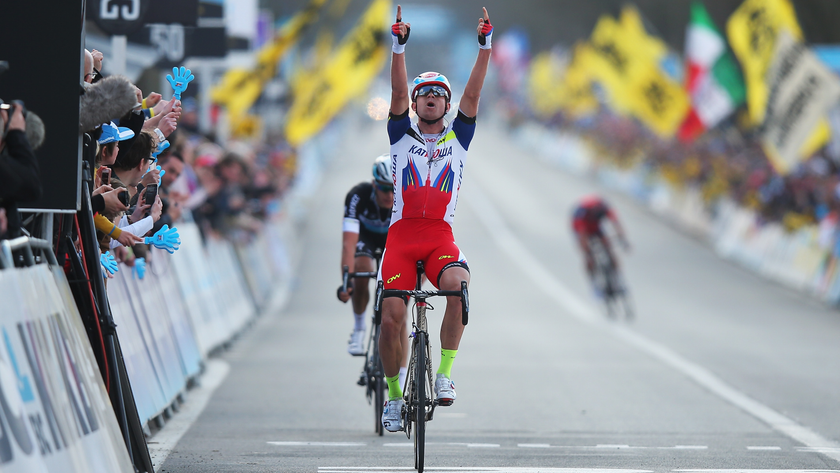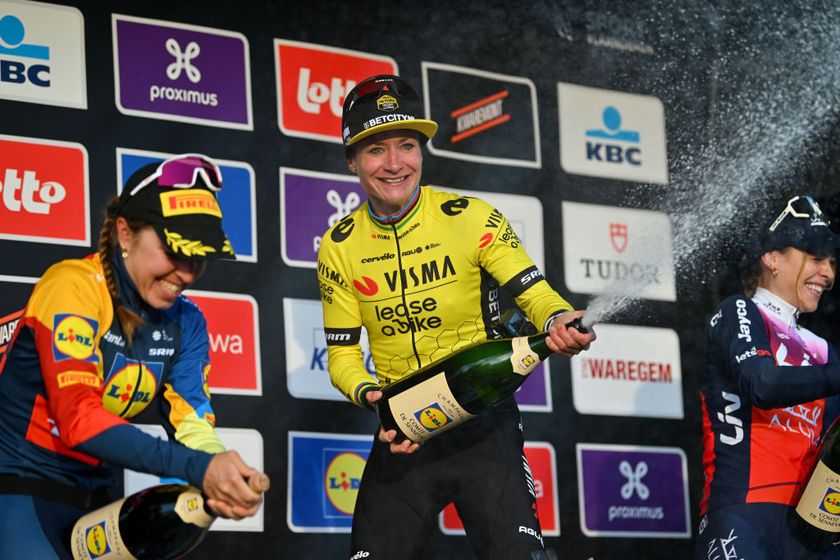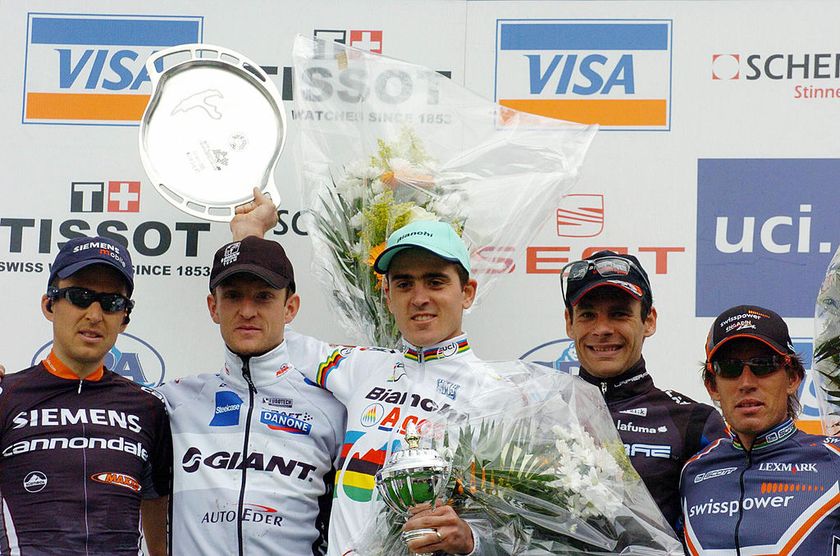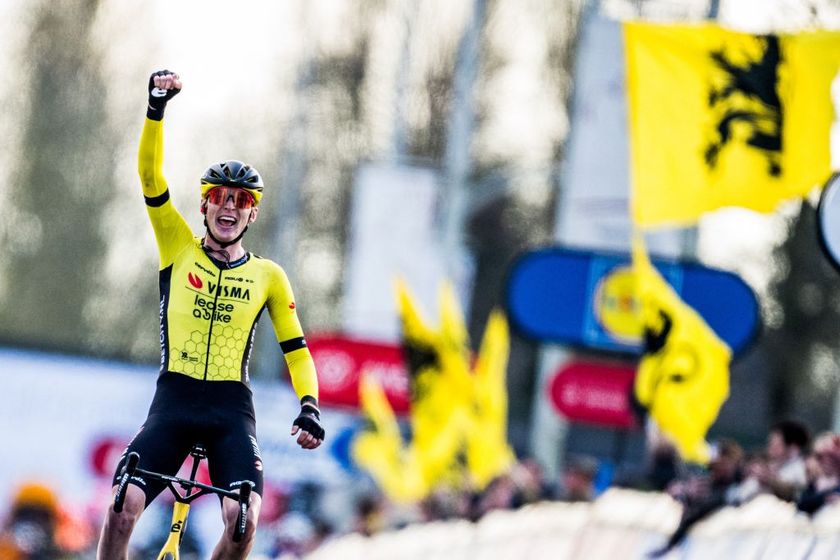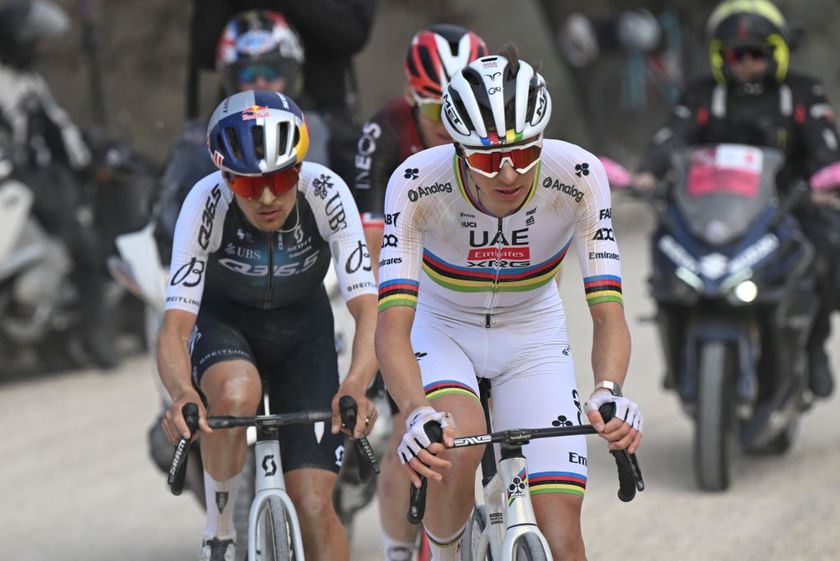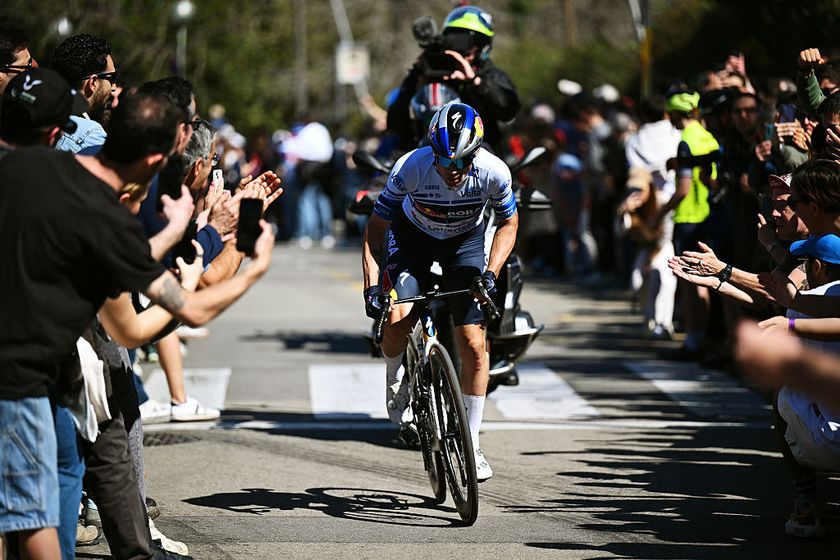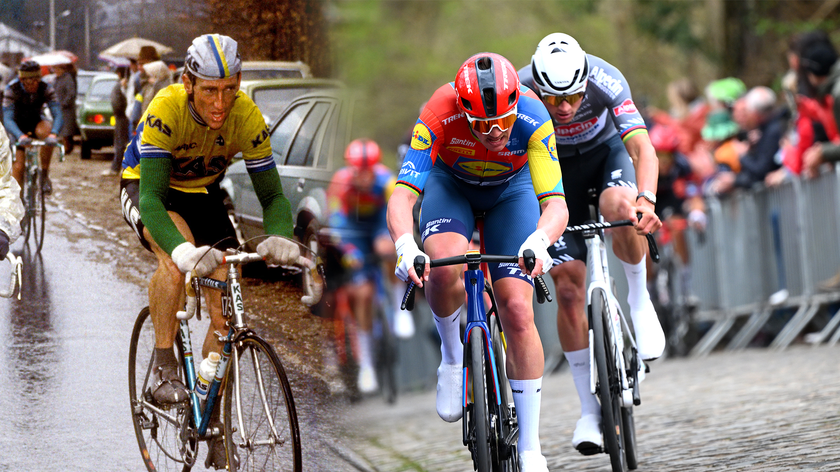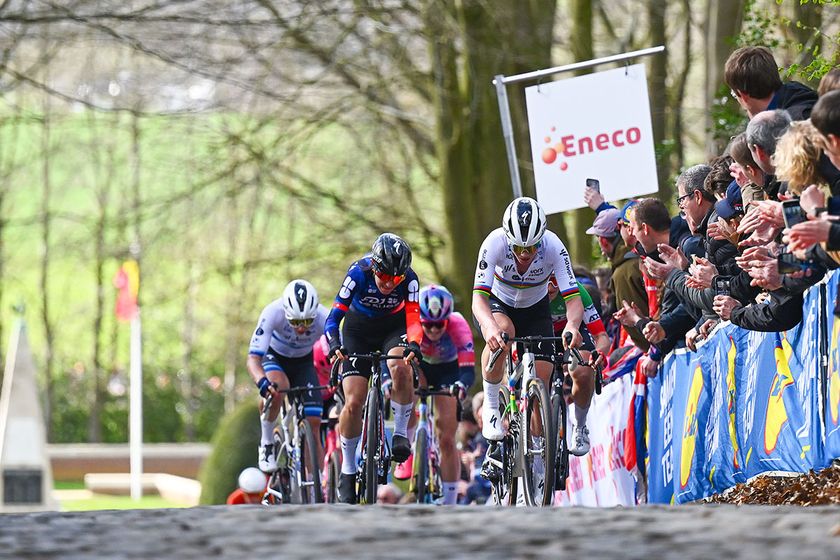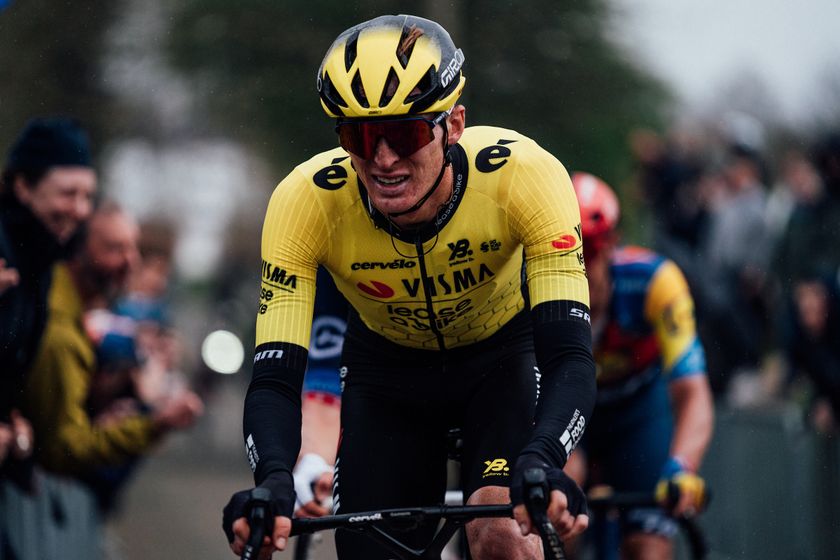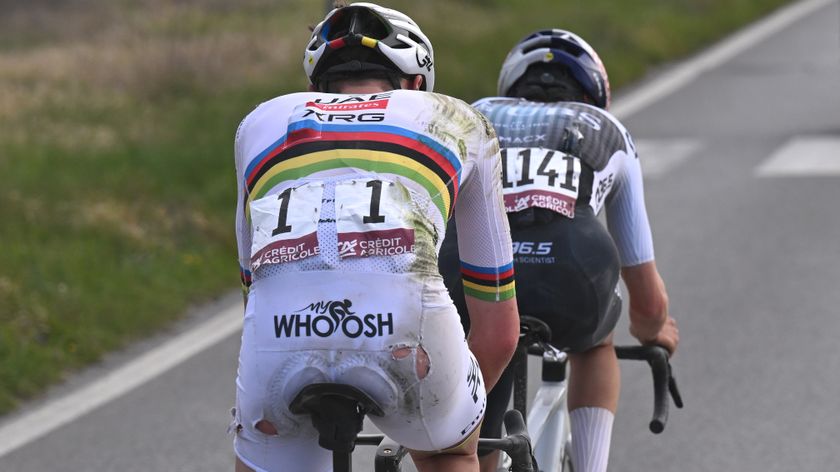Garmin-Chipotle: Cycling's new deal
The sport of cycling seems to have turned a corner in the past few weeks with the announcement of...



News Feature, June 19, 2008
What a difference a year makes. Last year, sponsors seemed to be leaving the sport in droves, but this month alone, four teams have announced multi-year title deals. Slipstream's Jonathan Vaughters spoke to Cyclingnews' Laura Weislo about his team's new deal with Garmin and the changing paradigm in team sponsorship.
The sport of cycling seems to have turned a corner in the past few weeks with the announcement of multi-year sponsorship deals by four major teams. First Team CSC announced that it would add Saxo Bank as a sponsor for this year's Tour de France, and replace CSC with Saxo Bank as sole title sponsor for the 2009 season. Then, Quick Step and Innergetic both revealed that they had renewed with the team of Patrick Lefevere despite Tom Boonen's cocaine positive.
Hot on the heels of these announcements, High Road Sports revealed that its team would take on a new strip of Columbia Sportswear in time for the Tour, and now Slipstream Sports has named Garmin as title sponsor. Both deals will last through the end of 2010.
Contrast this with last year's loss major cycling supporters T-Mobile (formerly Telekom), the Discovery Channel, Gerolsteiner, Credit Agricole - and this year's announcement by CSC that it would end its involvement with the sport, and it appears that the sport has recovered rather quickly from the doping scandals which threatened to bring cycling to its knees not too long ago.
According to Slipstream's Jonathan Vaughters, the difference is not just in the fact that teams have made a concerted effort to clean up the sport, but also in changing perceptions as to what is important to sponsors from within the cycling teams.
Spoken like a seasoned marketing executive, Vaughters explained that companies look at the sport in terms of how many impressions the team can get into the various media - news, magazines, television, the Internet - and compare it with how much they would need to spend on traditional advertising to get the same impression on consumers. "Cycling, at its most basic essence, it's an indirect media content buy - it gives X amount of media impressions, and companies look at this as opposed to, say, a Superbowl ad, and weigh the two."
Get The Leadout Newsletter
The latest race content, interviews, features, reviews and expert buying guides, direct to your inbox!
Beer maker Anheuser-Busch spent $26 million for ten 30-second commercials during the 2006 Superbowl to reach 90 million Americans and a billion eyes around the globe. The Tour de France, by comparison, attracts an audience of 2 billion worldwide. While Vaughters couldn't comment on the total value of the Garmin sponsorship, those ten commercials cost about as much money as it takes to fund a ProTour team through the end of 2010. Given those numbers, it's not surprising that companies have come back to the sport so quickly.
"Cycling, from an economics standpoint, is so attractive [to companies] that it takes something pretty massive to get people to not want to do cycling sponsorships. Doping is certainly massive enough to do that, and as soon as there was an indication that it's being dealt with, the sponsors come back in really fast.
"From an objective standpoint, cycling is a very effective marketing tool, and they just needed an excuse to get back in. We showed that we had some real empirical evidence that doping is no longer occurring, and as soon as that evidence was given a year to percolate, the sponsors came back.
"In fact, the CEO of Garmin had never been to a bike race or seen a bike race - it wasn't out of the love of the sport that he approved the deal, he did it based solely on the numbers."
The fact that companies aren't afraid to have their names associated with cycling anymore marks a significant change, but the teams themselves are becoming more savvy in how they present themselves to the world, and Slipstream has led the way in that regard.
"Companies don't look at race results. They're looking at the total branding and media content value. They want a certain image associated with their product - hardworking, technologically advanced, persevering, etc. They're looking for something, not subliminal, but a metaphorical tie between the sport and their product."
The Slipstream team's image of being an ethical organisation with a firm anti-doping stance was backed up by its testing program with the Agency for Cycling Ethics. It's a stance Vaughters helped pioneer, and one which seems to have helped revive cycling's reputation in the eyes of sponsors.
Garmin Vice President of Communications Jon Cassat confirmed that the team's anti-doping ethos was a major factor in its decision. "There are many of the things about the team that mirror the culture of Garmin. The very vocal stance on antidoping, and their being leaders in this crusade is very important to us. We have high morals, high integrity, and culturally we mirror this feeling that the best results come from personal commitment to hard work, and a dedication to arrive every day with enthusiasm to do the best of your ability," said Cassat, adding that the company had been in contact with the team for more than a year, and had done enough research to believe that the riders are clean. "We went into this with our eyes wide open."
Winning isn't everything
Vaughters went on to explain that sponsors aren't as concerned with a team's results as they are with the image that the team projects in association with its name.
"If you win more races, you might get more media exposure, but I don't think there is any direct correlation between winning x,y,z races and getting a sponsor.
"It is important that more people understand that sponsors get involved for positive image and media content, it's not because they want to crush the competition. I don't know that team directors and managers understood that in the past," he mused.
"Riders knew their contract value was based on their wins - and they made a direct correlation. But that's not how the advertising industry works. Now that we have more forward thinking people in the sport who see the complexities, we can give value to the sponsors without a desperate need to win races."
Without the pressure of having to win to keep the team afloat, riders can now focus on the sporting aspect of cycling - and winning is certainly on the agenda for the Garmin-Chipotle team. "Of course we will do everything we can to win races, but there's not a financial connection. We want to win because we're racing, but it's not like we're going to lose our sponsor if we don't. That attitude is fading."
What is more important to the sponsor is image, and having riders with character, intelligence and a sense of humour was something that Vaughters valued from the team's beginnings.
"We went about creating a team which had a specific feel to it with the riders we chose. We had multiple opportunities along the way to choose a rider who could win more races versus a rider who would fit in our culture. We wanted a team that was very American - we're more than half US riders and 90% native English speakers.
"We chose people with a good sense of humour and intelligent, articulate athletes with a lot of personality. If you start with a core group of riders like that, then you have to have the rest of the team on the same page as far as interests - otherwise it just wouldn't work out."
Geeking out for Garmin gear
It was fortunate that Vaughters chose riders who are smart and technologically savvy, because the Garmin Edge units that the team will use are about to raise the bar on techno-geekery. Not only will they incorporate route finding with speed, distance, heart rate, gradient, altitude and temperature, but the team has been working with Saris to perfect the incorporation of power values from the PowerTap wireless unit to the Garmin Edge over the ANT+Sport network.
"We had an engineer from Saris and one from Garmin here in Girona working on getting the PowerTap and the Edge to talk. It took a little bit of work, but I rode with it today and it worked great."
Vaughters hopes to make the team's data available to the public, but getting the data from the Tour de France has its own technical problems. "The rate limiting factor for making it available is how much time Allen [Lim] has to download it and move it onto the website. We did a little bit at the time trial during the Giro, but Allen is so overworked."
The sheer amount of data that comes out of the unit can be a bit overwhelming. Speaking at the formal announcement of the Garmin partnership, David Millar said they're just beginning to learn how to interpret it all. "I got to use it during the Giro, which was a new experience for me. In the time trials, I usually ask for as much information as I can get.
"We've had heart rate, power, speed, gradient - all that in the past, but the Garmin gives all of these numbers visually, and this is the first time we've had it all in one small unit. It's as if we've gone from the dark ages to the modern age in one leap."
Fans may have the opportunity to see some data from the team before the Tour, however. "It's our full intention to grow that idea and push out the data - we're taking all the data from the high altitude camp La Molina in the Pyrénées near Andorra," Vaughters told Cyclingnews.
The biggest advantage of the Garmin units for the team isn't just to keep them from getting lost on training rides. Having the onboard navigation, turn-by-turn instructions as well as way point features of the Garmin 705 could help the team get an edge if the Tour de France directors decide to ban race radios.
"The biggest thing a directeur sportif gives during a race is course directions. If teams can't convey this over the radio, our team will have an advantage because riders will have the course on a display right in front of them. They'll be able to see if a major road turns into a goat path up ahead, or that there's a sharp right followed by a climb. Riders will be able to see elevation gain, road changes, obstacles etc. We can program all of that in ahead of time so the riders will know what is coming in advance."
Getting the entire Tour de France route programmed in has been a time intensive process, but the squad is committed to exploiting all of the features of the unit for the Tour. After the race is over, the Tour route, and many of the riders' favourite rides may become available to the public through the Internet.
"We want to work with Garmin to get a networking site with published rides," Vaughters revealed. Other sites have attempted to do the same, such as Bikely.com, but Vaughters sees sharing data as a way to connect the team and the racing community with the recreational riding community.
"We can use the team to load their favourite rides around the world as the focal point of the web community. The holy grail for sponsorship is to connect the recreational riding community with the racing community and turn them into fans. That is an incredibly powerful demographic," Vaughters explained. "We need to start connecting the dots."
